Refine search
No keyword found to refine search
keywords EN
Places
Names
510 documents found
| 1 | 9 |
Documents per page :
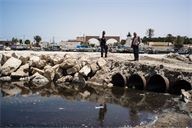
TUNISIA-ENVIRONMENT/ Phosphates, the poison of Gabès.
Augustin Le Gall / Le Pictorium
LePictorium_0320772.jpg
Gabes. June 3, 2016.
Nazih and Meherz, fishermen from the city of Gabes, observe the pollution in the mouth of a small, polluted river near the Gabes fishing port.
Nazih and Meherz, fishermen from the city of Gabes, observe the pollution in the mouth of a small, polluted river near the Gabes fishing port.

TUNISIA-ENVIRONMENT/ On the phosphate route in Tunisia.
Augustin Le Gall / Le Pictorium
LePictorium_0320680.jpg
Ali Jabri, a farmer in the Chenini oasis, stands before the former river, now dry, which used to irrigate the oasis's plots. A water management system has been imposed by the authorities, requiring farmers to rotate their irrigation crops every 20 to 30 days.
Tree crops need to be irrigated every 15 days, while vegetable crops require less frequent irrigation.
Gabes, July 2019.
Tree crops need to be irrigated every 15 days, while vegetable crops require less frequent irrigation.
Gabes, July 2019.
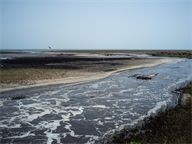
TUNISIA-ENVIRONMENT/ On the phosphate route in Tunisia.
Augustin Le Gall / Le Pictorium
LePictorium_0320690.jpg
View of the Tunisian Chemical Group (GCT) factory in Gabes. The Tunisian Chemical Group (GCT) factory discharges 13,000 tonnes of phosphogypsum per day into the sea, resulting from the chemical processing of phosphate into fertiliser. Fishermen complain about pollution caused by toxic emissions into the air, soil and sea, which has killed local marine life. Gabes. 4 June 2016.

TMP-WEA/ Swimming in the Seine in Paris, July 5, 2025
Julien Mattia / Le Pictorium
LePictorium_0311647.jpg
Opening of the Pont de Grenelle swimming area on July 5, 2025, in Paris.

TMP-WEA/ Swimming in the Seine in Paris, July 5, 2025
Julien Mattia / Le Pictorium
LePictorium_0311648.jpg
Opening of the Pont de Grenelle swimming area on July 5, 2025, in Paris.

TMP-WEA/ Swimming in the Seine in Paris, July 5, 2025
Julien Mattia / Le Pictorium
LePictorium_0311649.jpg
Opening of the Pont de Grenelle swimming area on July 5, 2025, in Paris.

TMP-WEA/ Swimming in the Seine in Paris, July 5, 2025
Julien Mattia / Le Pictorium
LePictorium_0311650.jpg
Opening of the Pont de Grenelle swimming area on July 5, 2025, in Paris.

TMP-WEA/ Swimming in the Seine in Paris, July 5, 2025
Julien Mattia / Le Pictorium
LePictorium_0311651.jpg
Opening of the Pont de Grenelle swimming area on July 5, 2025, in Paris.

TMP-WEA/ Swimming in the Seine in Paris, July 5, 2025
Julien Mattia / Le Pictorium
LePictorium_0311652.jpg
Opening of the Pont de Grenelle swimming area on July 5, 2025, in Paris.

TMP-WEA/ Swimming in the Seine in Paris, July 5, 2025
Julien Mattia / Le Pictorium
LePictorium_0311653.jpg
Opening of the Pont de Grenelle swimming area on July 5, 2025, in Paris.

TMP-WEA/ Swimming in the Seine in Paris, July 5, 2025
Julien Mattia / Le Pictorium
LePictorium_0311654.jpg
Opening of the Pont de Grenelle swimming area on July 5, 2025, in Paris.

TMP-WEA/ Swimming in the Seine in Paris, July 5, 2025
Julien Mattia / Le Pictorium
LePictorium_0311655.jpg
Opening of the Pont de Grenelle swimming area on July 5, 2025, in Paris.

TMP-WEA/ Swimming in the Seine in Paris, July 5, 2025
Julien Mattia / Le Pictorium
LePictorium_0311656.jpg
Opening of the Pont de Grenelle swimming area on July 5, 2025, in Paris.

TMP-WEA/ Swimming in the Seine in Paris, July 5, 2025
Julien Mattia / Le Pictorium
LePictorium_0311657.jpg
Opening of the Pont de Grenelle swimming area on July 5, 2025, in Paris.

TMP-WEA/ Swimming in the Seine in Paris, July 5, 2025
Julien Mattia / Le Pictorium
LePictorium_0311658.jpg
Opening of the Pont de Grenelle swimming area on July 5, 2025, in Paris.

TMP-WEA/ Swimming in the Seine in Paris, July 5, 2025
Julien Mattia / Le Pictorium
LePictorium_0311659.jpg
Opening of the Pont de Grenelle swimming area on July 5, 2025, in Paris.

TMP-WEA/ Swimming in the Seine in Paris, July 5, 2025
Julien Mattia / Le Pictorium
LePictorium_0311660.jpg
Opening of the Pont de Grenelle swimming area on July 5, 2025, in Paris.

TMP-WEA/ Swimming in the Seine in Paris, July 5, 2025
Julien Mattia / Le Pictorium
LePictorium_0311661.jpg
Opening of the Pont de Grenelle swimming area on July 5, 2025, in Paris.

TMP-WEA/ Swimming in the Seine in Paris, July 5, 2025
Julien Mattia / Le Pictorium
LePictorium_0311662.jpg
Opening of the Pont de Grenelle swimming area on July 5, 2025, in Paris.

TMP-WEA/ Swimming in the Seine in Paris, July 5, 2025
Julien Mattia / Le Pictorium
LePictorium_0311663.jpg
Opening of the Pont de Grenelle swimming area on July 5, 2025, in Paris.

TMP-WEA/ Swimming in the Seine in Paris, July 5, 2025
Julien Mattia / Le Pictorium
LePictorium_0311664.jpg
Opening of the Pont de Grenelle swimming area on July 5, 2025, in Paris.

TMP-WEA/ Swimming in the Seine in Paris, July 5, 2025
Julien Mattia / Le Pictorium
LePictorium_0311665.jpg
Opening of the Pont de Grenelle swimming area on July 5, 2025, in Paris.
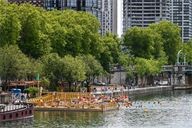
TMP-WEA/ Swimming in the Seine in Paris, July 5, 2025
Julien Mattia / Le Pictorium
LePictorium_0311666.jpg
Opening of the Pont de Grenelle swimming area on July 5, 2025, in Paris.

TMP-WEA/ Swimming in the Seine in Paris, July 5, 2025
Julien Mattia / Le Pictorium
LePictorium_0311667.jpg
Opening of the Pont de Grenelle swimming area on July 5, 2025, in Paris.

TMP-WEA/ Swimming in the Seine in Paris, July 5, 2025
Julien Mattia / Le Pictorium
LePictorium_0311668.jpg
Opening of the Pont de Grenelle swimming area on July 5, 2025, in Paris.

TMP-WEA/ Swimming in the Seine in Paris, July 5, 2025
Julien Mattia / Le Pictorium
LePictorium_0311669.jpg
Opening of the Pont de Grenelle swimming area on July 5, 2025, in Paris.

TMP-WEA/ Swimming in the Seine in Paris, July 5, 2025
Julien Mattia / Le Pictorium
LePictorium_0311670.jpg
Opening of the Pont de Grenelle swimming area on July 5, 2025, in Paris.

TMP-WEA/ Swimming in the Seine in Paris, July 5, 2025
Julien Mattia / Le Pictorium
LePictorium_0311671.jpg
Opening of the Pont de Grenelle swimming area on July 5, 2025, in Paris.

TMP-WEA/ Swimming in the Seine in Paris, July 5, 2025
Julien Mattia / Le Pictorium
LePictorium_0311672.jpg
Opening of the Pont de Grenelle swimming area on July 5, 2025, in Paris.

TMP-WEA/ Swimming in the Seine in Paris, July 5, 2025
Julien Mattia / Le Pictorium
LePictorium_0311673.jpg
Opening of the Pont de Grenelle swimming area on July 5, 2025, in Paris.

TMP-WEA/ Swimming in the Seine in Paris, July 5, 2025
Julien Mattia / Le Pictorium
LePictorium_0311674.jpg
Opening of the Pont de Grenelle swimming area on July 5, 2025, in Paris.

TMP-WEA/ Swimming in the Seine in Paris, July 5, 2025
Julien Mattia / Le Pictorium
LePictorium_0311675.jpg
Opening of the Pont de Grenelle swimming area on July 5, 2025, in Paris.

TMP-WEA/ Swimming in the Seine in Paris, July 5, 2025
Julien Mattia / Le Pictorium
LePictorium_0311676.jpg
Opening of the Pont de Grenelle swimming area on July 5, 2025, in Paris.

TMP-WEA/ Swimming in the Seine in Paris, July 5, 2025
Julien Mattia / Le Pictorium
LePictorium_0311680.jpg
Opening of the Pont de Grenelle swimming area on July 5, 2025, in Paris.

TMP-WEA/ Swimming in the Seine in Paris, July 5, 2025
Julien Mattia / Le Pictorium
LePictorium_0311684.jpg
Opening of the Pont de Grenelle swimming area on July 5, 2025, in Paris.

TMP-WEA/ Swimming in the Seine in Paris, July 5, 2025
Julien Mattia / Le Pictorium
LePictorium_0311685.jpg
Opening of the Pont de Grenelle swimming area on July 5, 2025, in Paris.

TMP-WEA/ Swimming in the Seine in Paris, July 5, 2025
Julien Mattia / Le Pictorium
LePictorium_0311686.jpg
Opening of the Pont de Grenelle swimming area on July 5, 2025, in Paris.

TMP-WEA/ Swimming in the Seine in Paris, July 5, 2025
Julien Mattia / Le Pictorium
LePictorium_0311687.jpg
Opening of the Pont de Grenelle swimming area on July 5, 2025, in Paris.

TMP-WEA/ Swimming in the Seine in Paris, July 5, 2025
Julien Mattia / Le Pictorium
LePictorium_0311688.jpg
Opening of the Pont de Grenelle swimming area on July 5, 2025, in Paris.

The village of Terjit in the heart of the Mauritanian Adrar
Nicolas Réméné / Le Pictorium
LePictorium_0299468.jpg
Village of Terjit in the Adrar region of Mauritania, July 11, 2024.
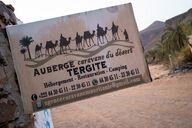
The village of Terjit in the heart of the Mauritanian Adrar
Nicolas Réméné / Le Pictorium
LePictorium_0299469.jpg
Inn in Terjit in the Adrar region of Mauritania, July 11, 2024.
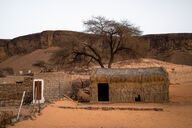
The village of Terjit in the heart of the Mauritanian Adrar
Nicolas Réméné / Le Pictorium
LePictorium_0299470.jpg
Village of Terjit in the Adrar region of Mauritania, July 11, 2024.
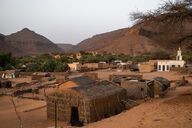
The village of Terjit in the heart of the Mauritanian Adrar
Nicolas Réméné / Le Pictorium
LePictorium_0299471.jpg
Village of Terjit in the Adrar region of Mauritania, July 11, 2024.
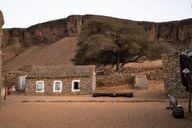
The village of Terjit in the heart of the Mauritanian Adrar
Nicolas Réméné / Le Pictorium
LePictorium_0299472.jpg
Village of Terjit in the Adrar region of Mauritania, July 11, 2024.
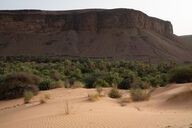
The village of Terjit in the heart of the Mauritanian Adrar
Nicolas Réméné / Le Pictorium
LePictorium_0299473.jpg
Village of Terjit in the Adrar region of Mauritania, July 11, 2024.
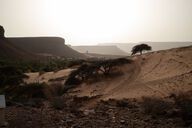
The village of Terjit in the heart of the Mauritanian Adrar
Nicolas Réméné / Le Pictorium
LePictorium_0299474.jpg
Village of Terjit in the Adrar region of Mauritania, July 11, 2024.
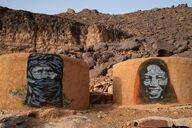
The village of Terjit in the heart of the Mauritanian Adrar
Nicolas Réméné / Le Pictorium
LePictorium_0299475.jpg
Tourist camp -Chez Jemal- in Terjit in the Adrar region in Mauritania, July 11, 2024.
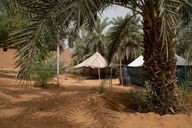
The village of Terjit in the heart of the Mauritanian Adrar
Nicolas Réméné / Le Pictorium
LePictorium_0299476.jpg
Tourist camp -Chez Jemal- in Terjit in the Adrar region in Mauritania, July 11, 2024.
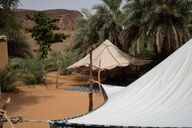
The village of Terjit in the heart of the Mauritanian Adrar
Nicolas Réméné / Le Pictorium
LePictorium_0299477.jpg
Tourist camp -Chez Jemal- in Terjit in the Adrar region in Mauritania, July 11, 2024.
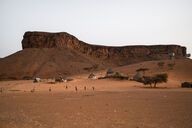
The village of Terjit in the heart of the Mauritanian Adrar
Nicolas Réméné / Le Pictorium
LePictorium_0299478.jpg
Village of Terjit in the Adrar region of Mauritania, July 11, 2024.
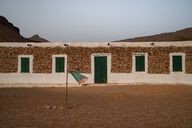
The village of Terjit in the heart of the Mauritanian Adrar
Nicolas Réméné / Le Pictorium
LePictorium_0299479.jpg
Terjit school in the Adrar region of Mauritania, July 7, 2024.
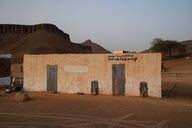
The village of Terjit in the heart of the Mauritanian Adrar
Nicolas Réméné / Le Pictorium
LePictorium_0299480.jpg
Terjit school in the Adrar region of Mauritania, July 7, 2024.
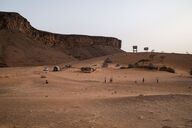
The village of Terjit in the heart of the Mauritanian Adrar
Nicolas Réméné / Le Pictorium
LePictorium_0299481.jpg
Village of Terjit in the Adrar region of Mauritania, July 11, 2024.
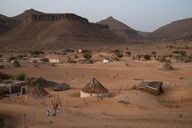
The village of Terjit in the heart of the Mauritanian Adrar
Nicolas Réméné / Le Pictorium
LePictorium_0299482.jpg
Village of Terjit in the Adrar region of Mauritania, July 11, 2024.
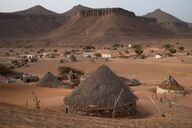
The village of Terjit in the heart of the Mauritanian Adrar
Nicolas Réméné / Le Pictorium
LePictorium_0299483.jpg
Village of Terjit in the Adrar region of Mauritania, July 11, 2024.
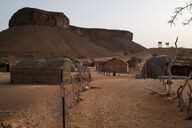
The village of Terjit in the heart of the Mauritanian Adrar
Nicolas Réméné / Le Pictorium
LePictorium_0299484.jpg
Village of Terjit in the Adrar region of Mauritania, July 11, 2024.
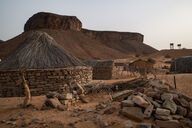
The village of Terjit in the heart of the Mauritanian Adrar
Nicolas Réméné / Le Pictorium
LePictorium_0299485.jpg
Village of Terjit in the Adrar region of Mauritania, July 11, 2024.
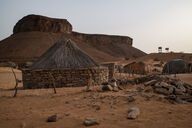
The village of Terjit in the heart of the Mauritanian Adrar
Nicolas Réméné / Le Pictorium
LePictorium_0299486.jpg
Village of Terjit in the Adrar region of Mauritania, July 11, 2024.
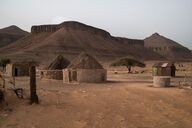
The village of Terjit in the heart of the Mauritanian Adrar
Nicolas Réméné / Le Pictorium
LePictorium_0299487.jpg
Village of Terjit in the Adrar region of Mauritania, July 11, 2024.
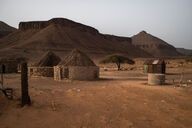
The village of Terjit in the heart of the Mauritanian Adrar
Nicolas Réméné / Le Pictorium
LePictorium_0299488.jpg
Village of Terjit in the Adrar region of Mauritania, July 11, 2024.
Next page
